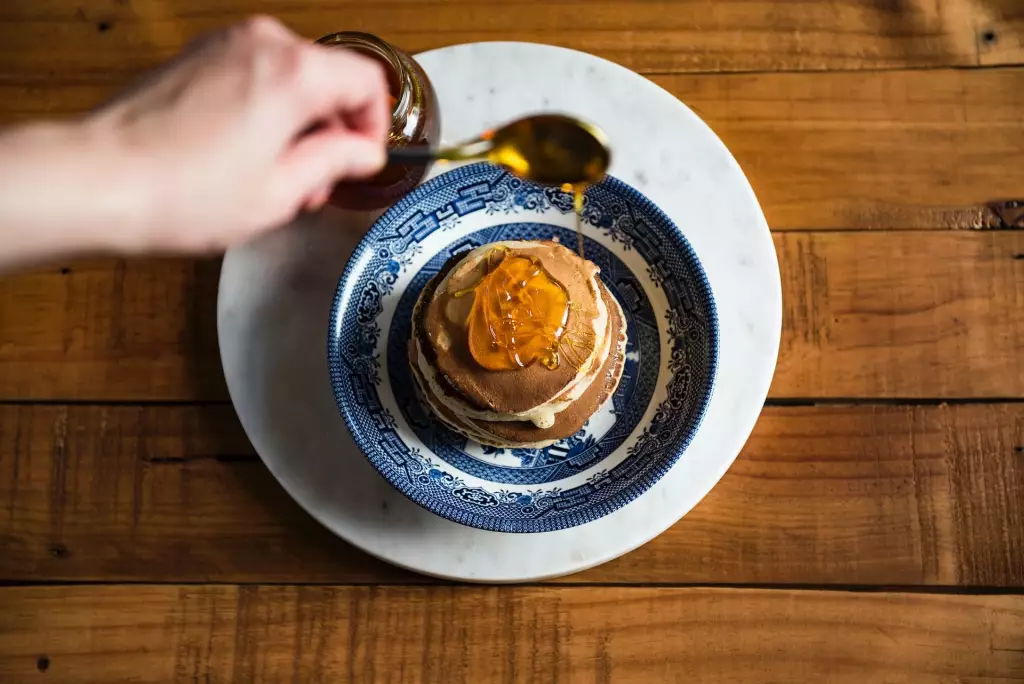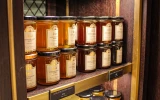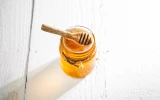What Flower Makes the Sweetest Honey?
If you've ever tried local, raw honey, you've probably noticed that different kinds of honey can taste incredibly different. The main reason for this is that the flowering plants from which foraging bees collect nectar and pollen have distinct flavor profiles. Honeybees produce honey from nectar, and the flowering plants from which they collect nectar influence the taste.
The flower that produces the sweetest honey is the black locust, or Robinia pseudoacacia. It’s a good spring bee forage that is mostly found in Appalachian forests. The nectar of a black locust bloom yields honey that is floral, fruity, and delicate. Locust honey is very sweet with hints of vanilla.
In the United States alone, there are over 300 different types of honey, each originating from a different floral source. But what made the black locust plant produce the sweetest honey? Let’s find out.
Summary
- Different flowers produce different types of honey that vary in taste, color, fragrance, and texture.
- When bees forage primarily on one type of plant, the honey is referred to as monofloral.
- When bees forage on a variety of plants, the honey is referred to as multifloral.

On this page:
What Is The Sweetest Type of Honey?
Locust honey or Acacia honey has the most fructose, which is the sweetest natural sugar, and the least maltose, which is a very bland sugar. This is according to a study carried out by Dr. Jonathan White for the USDA in 1962.
Acacia honey is an all-purpose honey with a very mild but sweet flavor. It’s not actually made from the acacia flower. The nectar is instead derived from a "false acacia tree," also known as the black locust. It's a light and clear honey made from the nectar of Robinia pseudoacacia blossoms, also known as black locust in North America and Europe.
Because of its high fructose content, black locust honey is one of the clearest, lightest-colored honeys available, and it's unlikely to crystallize in the jar. Acacia honey takes longer to crystallize, most likely due to its higher fructose content.
Acacia honey is an excellent choice for smaller establishments where a jar of honey may take a long time to finish. The honey can remain liquid for an extended period of time. Because of its mild, delicate floral flavor, it is one of the most popular and sweetest honey varieties.
Black locust honey is an excellent choice for diabetics due to its low sucrose content. It is well-known for its medicinal properties. It cleanses the liver, regulates the intestine, and is anti-inflammatory for the respiratory system.

Acacia is very sweet with a clean, pure, classic honey flavor. To bring out the light flavor of black locust honey, beekeepers recommend pairing it with cheese. This is an excellent complement to fresh cheeses, yogurt, fruit, ice cream, cereal, teas, beverages, and desserts.
This honey is great for sweetening beverages without changing the taste or aroma. You can put this honey in your tea. It's so mild that it doesn't interfere with the tea's aroma, which you want to keep. This honey is also popular among children. Its sweetness complements the salty tang of the cheese perfectly.
Black Locust Flower Makes The Sweetest Honey
In the Appalachian forests, black locust is one of the first nectar sources for bees. The black locust tree is native to North America's eastern and southeastern regions. Its nectar yields honey that is floral, fruity, and delicate.
The black locust tree is well-known for its fruity and fragrant honey. The fragrant honey that black locust produces is clear and light in color, ranging from water white to lemon yellow to a lovely, faint green.
A batch of monofloral black locust honey can be as clear as a glass jar if there is little cross-contamination from other flowers. Because its honey is high in fructose, it can be stored for extended periods of time without crystallizing.
Locust honey, also known as Acacia honey, is distinguished by its sweet flavor and low acid content. The flavor is very sweet, with hints of vanilla and no aftertaste. The honey remains liquid and does not crystallize as easily as other types of honey due to its high fructose content.
The black locust tree, a member of the Fabaceae family, has nitrogen-fixing bacteria nodules on its roots, making it an excellent species for re-vegetating poor or damaged soils. It is an important species for reclaiming mined land in Appalachia.
The tree's tolerance for low pH has made it useful for strip-mine reclamation sites. This is because it is tolerant of poor soil and can actually help restore damaged soil thanks to the nodules of nitrogen-fixing bacteria on its roots.
Due to the need for perfect weather and the short time frame that the nectar remains on the trees, black locust trees produce one of the rarest types of honey.
Black locust grows quickly and matures to be 40–70 feet tall. It is frequently planted as a source of firewood, not only because it grows quickly, but also because the wood burns extremely hot. Although the tree cannot tolerate shade or freezing weather, it thrives in a wide range of moisture, fertility, and slope conditions.
Honey Tastes Different Depending On The Flower
Different kinds of honey vary in color and flavor depending on the nectar source visited by honeybees. In fact, the United States alone has over 300 honey varietals, each originating from a different floral source. Even your favorite brand of honey may have slightly different tastes from bottle to bottle, because our hardworking bee friends put the flavor in.
If you've ever seen bottles of honey labeled as wildflower, buckwheat, clover, or orange blossom, that's because different flowers produce different types of honey with different flavors. The properties of honey made from different flowers visited by bees vary.
When bees forage primarily on one type of plant, the honey is referred to as "monofloral," and it has a more consistent flavor profile than when bees forage on a variety of flowering plants in their immediate vicinity.
Honey bees produce honey from nectar, and the flowering plants from which they collect nectar influence the taste. Honey bees can travel up to three miles to collect nectar, pollen, water, and bee glue, which is used in the hive to seal cracks and varnish walls.
A bee can visit more than 600 flowers per day in her search for the best nectar sources. Bees will travel to and collect nectar from more than a million flowers to make a single pound of honey.

With nectar collected from so many different flowers and native plants varying from region to region, it's no surprise that honey tastes and looks different.
Terroir, a term more commonly used by winemakers, is also used in honey. It derives from the French term for "taste of place." Terroir refers to the soil, climate, and geographic area that gave rise to the distinctive qualities found in each jar.
A flower's terroir determines where it will grow, when it will bloom, how much nectar it will generate, and even the extent to which bees can forage. Thus, each honey harvest can have a variety of flavors, colors, and aromas that are determined by nature.
It is now clear why honey produced by bees collecting pollen from orange blossoms will taste different from honey produced by bees collecting pollen from clover or even tupelo flowers. There may be more subtle terroir differences between honeys produced in Florida and Spain.
Where bees collect nectar and pollen is determined by the season and the availability of blooming plants in the area. All of these influence how the honey tastes, as well as its color and texture.
When a honeybee is foraging in a flower for nectar and pollen, she gets covered in pollen granules, which inevitably end up in the capped honey. This pollen not only contributes to the unique characteristics of honey, but it also serves as a traceable indicator of which flowers the honeybee visited during her foraging.
What Makes Natural Honey Sweet?
Organic substances called enzymes quicken biological reactions. These enzymes can be utilized repeatedly because they are not depleted during the reaction.
Honeybees modify the nectar chemically in addition to collecting it. Their salivary glands create an enzyme known as invertase.
Invertase is added after the bee has finished collecting the nectar. This enzyme aids in the conversion of sucrose into a mixture of glucose and fructose. This is the beginning of honey-making.
The taste of honey is also improved by an enzyme called amylase. This enzyme aids in the conversion of amylose to glucose. Because it is simpler to digest, glucose is what gives honey its sweetness.
The glucose is then broken down by another enzyme called glucose oxidase, which also maintains the honey's pH.


